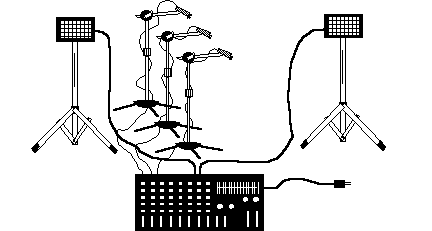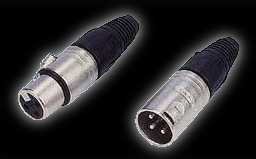.

TH 1551
Sound for the Theatre
Inputs and Outputs
A major part of Sound Design is transferring:
Acoustic energy
into electrical energy using microphones
and
Electrical energy into acoustic energy
using speakers.
To do that, we need a Sound System.
.
Impedance Issues
Signal: noise ratio: This small signal must be protected to remain pure, so when amplified, noise is not also amplified.
Shield wire: We use a special third wire to capture any outside electircal energy that may cause audio interference, and siphon it away. This is called a balanced wiring configuration.

Line level - 10K ohms: All audio appliances, and some cheaper microphones, use relatively high levels of energy to transfer the audio signal from one component to another. Unbalanced microphones, which are not recommended for theatre use, may rate between 50K and 2M ohms, using a two wire unbalanced configuration. Due to voltage drop within the unbalanced line, these types of microphones, as well as all other audio appliances, should not be too far apart - perhaps 20' maximum.
Types of Input Connectors


3 pin XLR Female & Male Connectors
Mic cable
![]()

1/4" phono Unbalanced (2 or 3 wire) Female and Male Connectors
TRS (tip/ring/sleeve) is a balanced connector. Pin #1 serves as the shield.
TS (tip/sleeve) is unbalanced with no shield.


RCA
Audio Appliances Female and Male Connectors
Other
MPL: Two Pin Male Speaker Patch Connectors
Mini-Phono: Male to Male Audio Appliance Pin Patch Connectors
Types of Speaker Connectors
speakOn
1/4" TS unbalanced Phono
Universal - Bare Wire
Marshall Center Wall Outlets
speakOn - Speaker Outlets
XLR Female - Microphone Outlets
Cabling Technique
Over/under
Tie line
Troubleshooting
60 cycle hum - unshielded mike cable
feedback - mike/speaker placement
pop - amplifier on last
crackle & buzzes - dirty mixer potentiometers
RF signal - shielded cable bleed